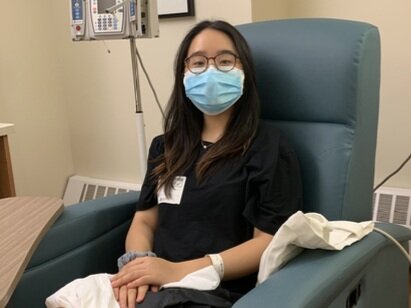By Isabela Hernandez (Florida, USA)
We must be very cautious on what social media tries to sell when promoting these gut healing products.
I can’t be the only one who was succumbed to the influence of “gut tik tok” or Instagram posts claiming that a magic powder from Amazon will cure your gut. I see these posts, still knowing that I need to be trusting professionals over influencers, and a small part of me wonders Is this the cure I’ve been looking for? On days I’m writhing in pain or annoyed about my medications, I truly do think about buying into an influencer's recommendations on how to heal your gut and buy the millions of supplements they promote. Maybe I won’t ever have to take medication again! BUT, we must be very cautious on what social media tries to sell when promoting these gut healing products.
“I see these posts, still knowing that I need to be trusting professionals over influencers, and a small part of me wonders Is this the cure I’ve been looking for?”
On days I’m writhing in pain or annoyed about my medications, I truly do think about buying into an influencer's recommendations on how to heal your gut and buy the millions of supplements they promote.
It’s always disheartening for me to see people who have managed to “cure” their gut with products I’ve never heard of and wonder, is it even true? Most of the time, it is not. But it’s hard for us, those who have suffered with these diseases for a while and will continue to do so, to see these videos and not feel a flicker of hope that maybe our cure lies in the next new gut supplement. I’m not saying all the information on social media related to gut health is bad, some of it is very informational! There are many trained professionals out there who make incredible content based on diseases of the gut. We just need to learn, as a community for people with GI issues, to follow professionals who we trust to give us well-informed advice. It’s important to use social media as a means of getting trustworthy information, not gaining false hope by influencers with promotional content that lacks real evidence. This is definitely something I need to work on as well but I trust we will all be able to find a healthy balance when it comes to social media.
“ It’s important to use social media as a means of getting trustworthy information, not gaining false hope by influencers with promotional content that lacks real evidence. ”
This article is sponsored by Trellus
Trellus envisions a world where every person with a chronic condition has hope and thrives. Their mission is to elevate the quality and delivery of expert-driven personalized care for people with chronic conditions by fostering resilience, cultivating learning, and connecting all partners in care.
























